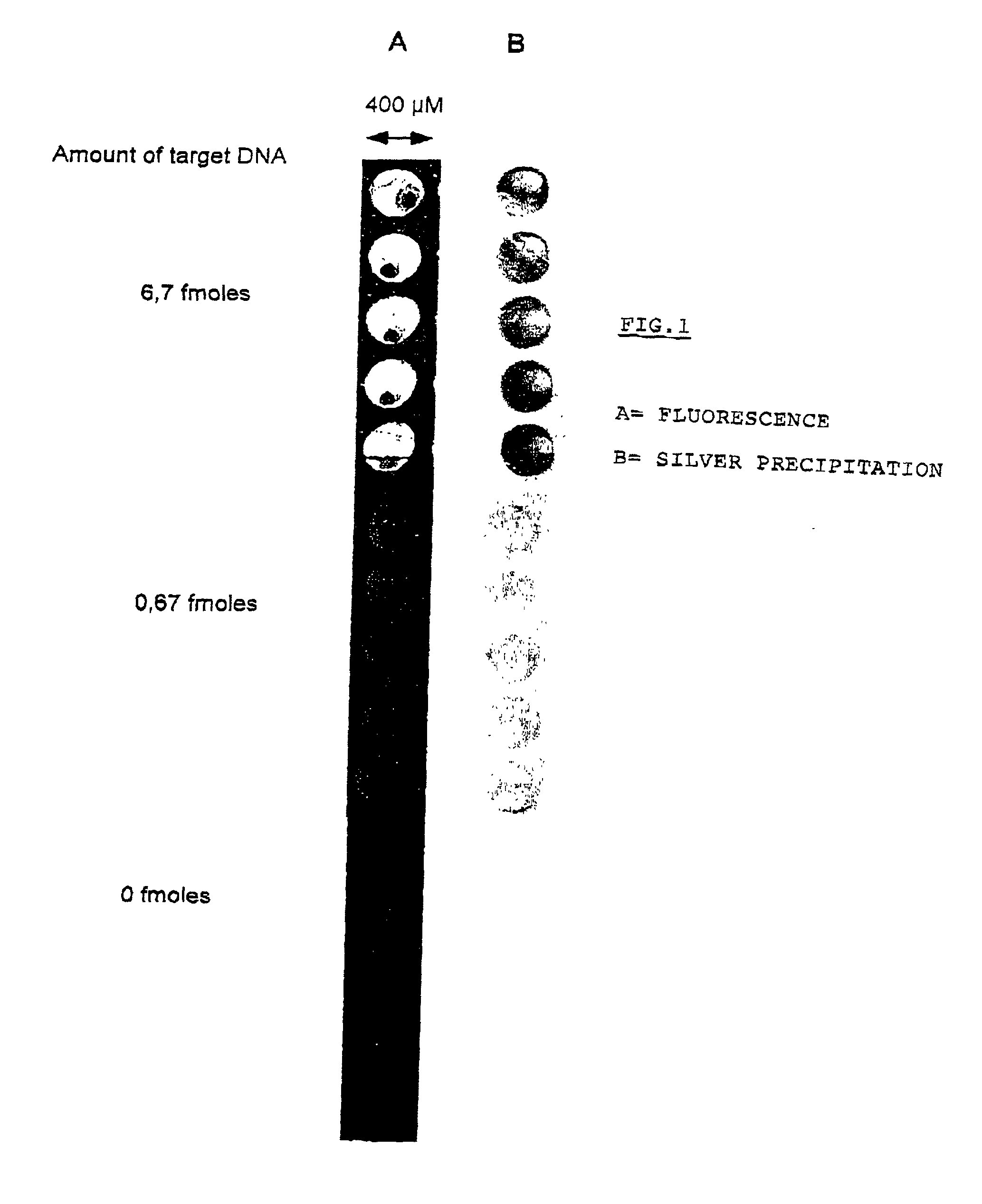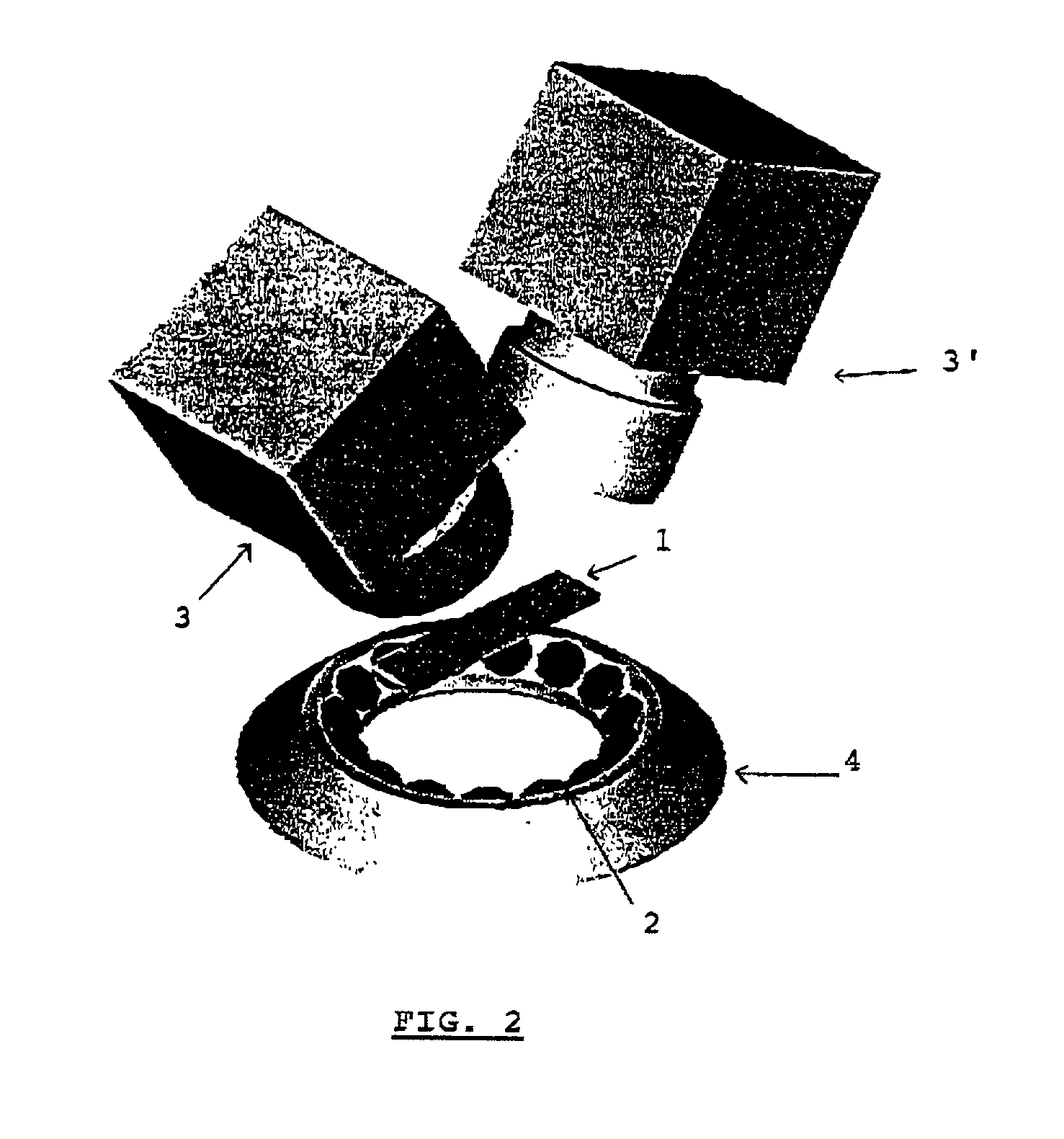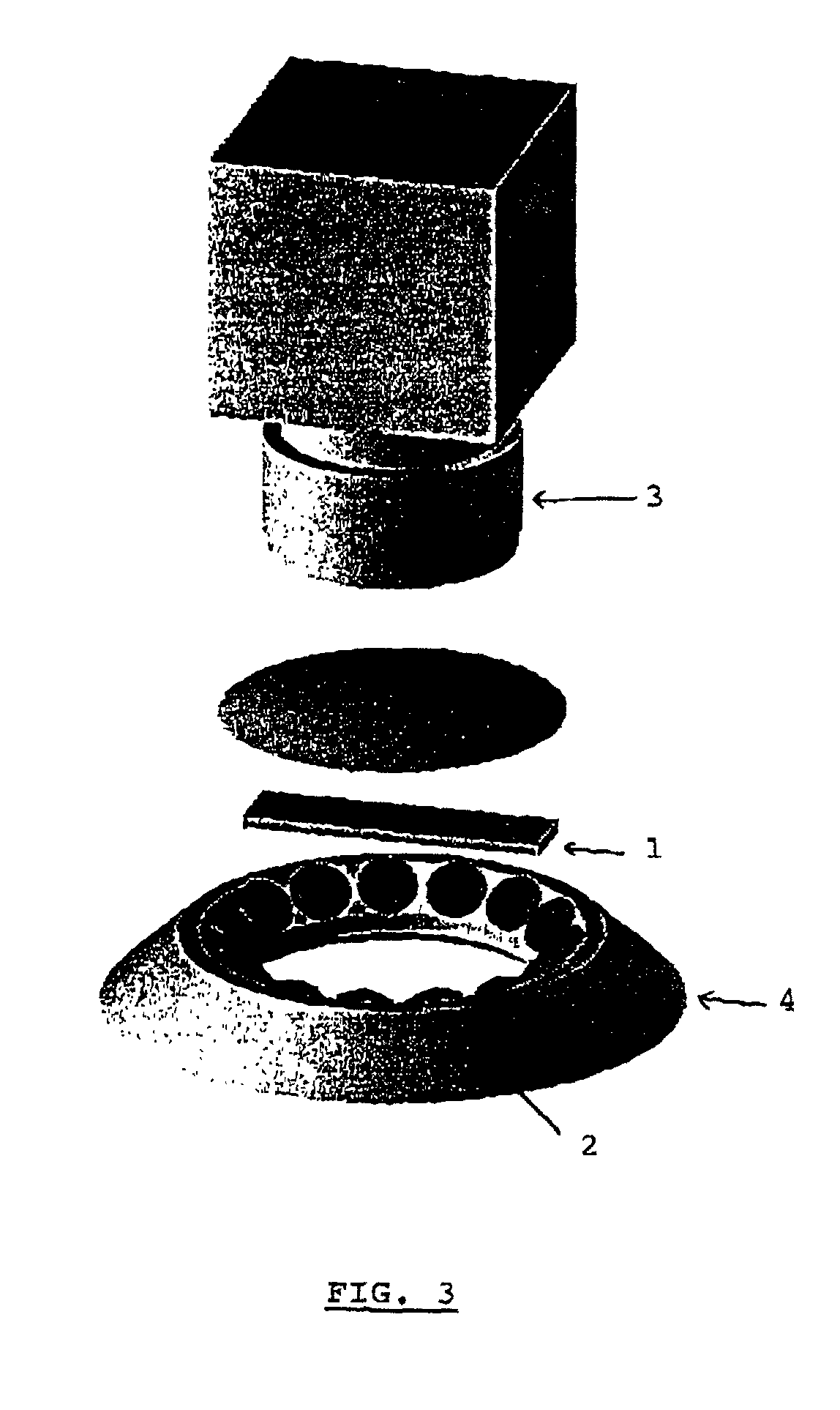Method for the identification and/or the quantification of a target compound obtained from a biological sample upon chips
a biological sample and target compound technology, applied in the field of biological sample target compound identification and/or quantification method, can solve the problems of low amount of fluorescent molecules, difficult detection of bound target compounds, and insufficiently sensitive methods for such detection
- Summary
- Abstract
- Description
- Claims
- Application Information
AI Technical Summary
Benefits of technology
Problems solved by technology
Method used
Image
Examples
example 2
[0088] Detection of Proteins on Biochips
[0089] Fixation of Antibodies on the Array
[0090] The glass of the array was activated as described here above in order to obtain aldehyde groups on the surface. The antibodies used in this experiment were raised against bovine serum albumin for positive control and non specific IgG for negative control. The antibodies at 10 .mu.g / ml in PBS solution were spotted using the 250 .mu.m diameter pins directly on the glass. The amino groups of the antibodies could react with the aldehyde present on the glass. The reaction was performed for 1 h at room temperature. The glasses were washed with a PBS buffer.
[0091] Detection of Bovine Serum Albumin by ELISA on the Array
[0092] A solution of bovine serum albumin (BSA) at 10 .mu..mu.g / ml in PBS containing 0.1% casein was added on the array and incubated for 30 min. The array was then washed 3 times with PBS containing 0.1% Tween 20 and then incubated with a solution of biotinylated anti-BSA at 20 .mu.g / ml ...
example 3
[0093] Preferred embodiments of the apparatus for performing the quantification method according to the invention is shown in the FIGS. 2 to 7. The apparatus comprises a solid support 1, several illuminant sources 2 regularly spaced from each other on a circular support 4, said circular support being placed under said solid support 1, and two cameras 3, 3', said cameras being placed above said solid support 1 and being arranged oppositely in a plane.
[0094] The apparatus may also comprise a solid support 1, several illuminant sources 2 regularly spaced from each other on a circular support 4, said circular support being placed under said solid support 1, and one camera 3 placed above said solid support 1.
[0095] Further, the apparatus may also comprise a solid support 1. The apparatus comprises also a first set of illuminant sources 2 and a second set of illuminant sources 2, the illuminant sources of each set 2, 2' being regularly spaced from each other in a plane, preferably on a ci...
PUM
| Property | Measurement | Unit |
|---|---|---|
| length | aaaaa | aaaaa |
| diameter | aaaaa | aaaaa |
| diameter | aaaaa | aaaaa |
Abstract
Description
Claims
Application Information
 Login to View More
Login to View More - R&D
- Intellectual Property
- Life Sciences
- Materials
- Tech Scout
- Unparalleled Data Quality
- Higher Quality Content
- 60% Fewer Hallucinations
Browse by: Latest US Patents, China's latest patents, Technical Efficacy Thesaurus, Application Domain, Technology Topic, Popular Technical Reports.
© 2025 PatSnap. All rights reserved.Legal|Privacy policy|Modern Slavery Act Transparency Statement|Sitemap|About US| Contact US: help@patsnap.com



